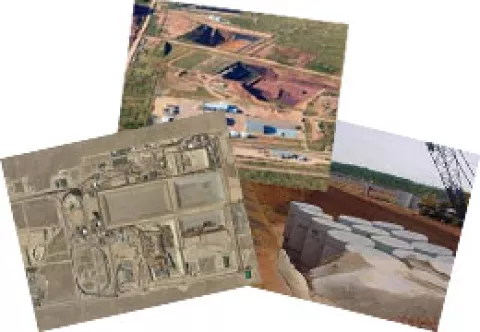Low-Level Waste Disposal
On this page:
What We Regulate
Low-level waste disposal occurs at commercially operated low-level waste disposal facilities that must be licensed by either NRC or Agreement States. The facilities must be designed, constructed, and operated to meet safety standards. The operator of the facility must also extensively characterize the site on which the facility is located and analyze how the facility will perform for thousands of years into the future.
There are four existing low-level waste disposal facilities in the United States that accept various types of low-level waste. All are in Agreement States.
The Low-level Radioactive Waste Policy Amendments Act of 1985 gave the states responsibility for the disposal of their low-level radioactive waste. The Act encouraged the states to enter into compacts that would allow them to dispose of waste at a common disposal facility. Most states have entered into compacts; however, only one new disposal facility has been built since the Act was passed.
How We Regulate
NRC and the Agreement States regulate low-level waste disposal through a combination of regulatory requirements, licensing, and safety oversight. For more information see the following:
- Regulations, Guidance and Communications
- Licensing
- Oversight
- Decision Support
- Public Outreach
- Low-Level Waste Disposal Under 10 CFR 20.2002
- 10 CFR 20.2002 Process for Alternative Disposals
- Very Low Level Waste
- Transfer of Very Low-Level Waste to Exempt Persons for Disposal
See our Agreement States page for more information on the roles of NRC and the Agreement States in regulating low-level waste disposal and other activities associated with nuclear materials.
Page Last Reviewed/Updated Monday, March 11, 2024
Page Last Reviewed/Updated Monday, March 11, 2024


